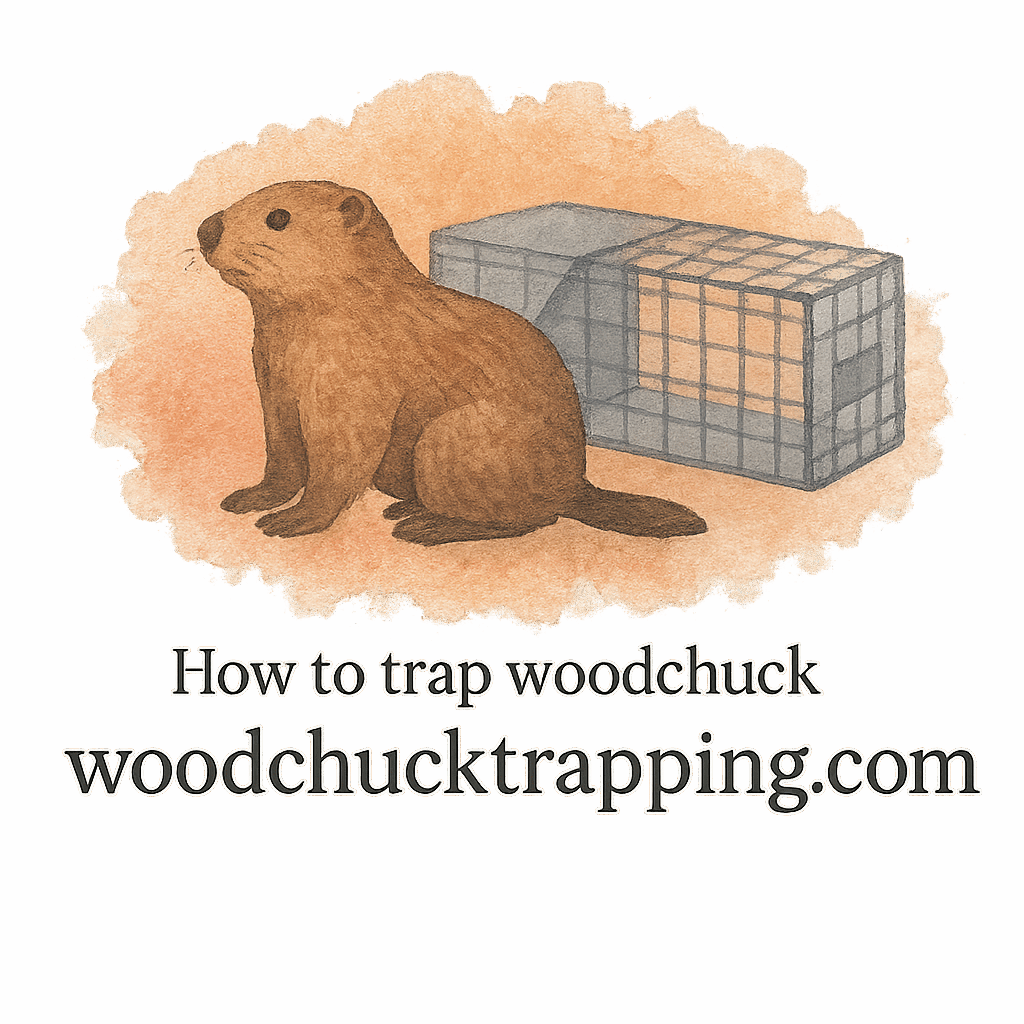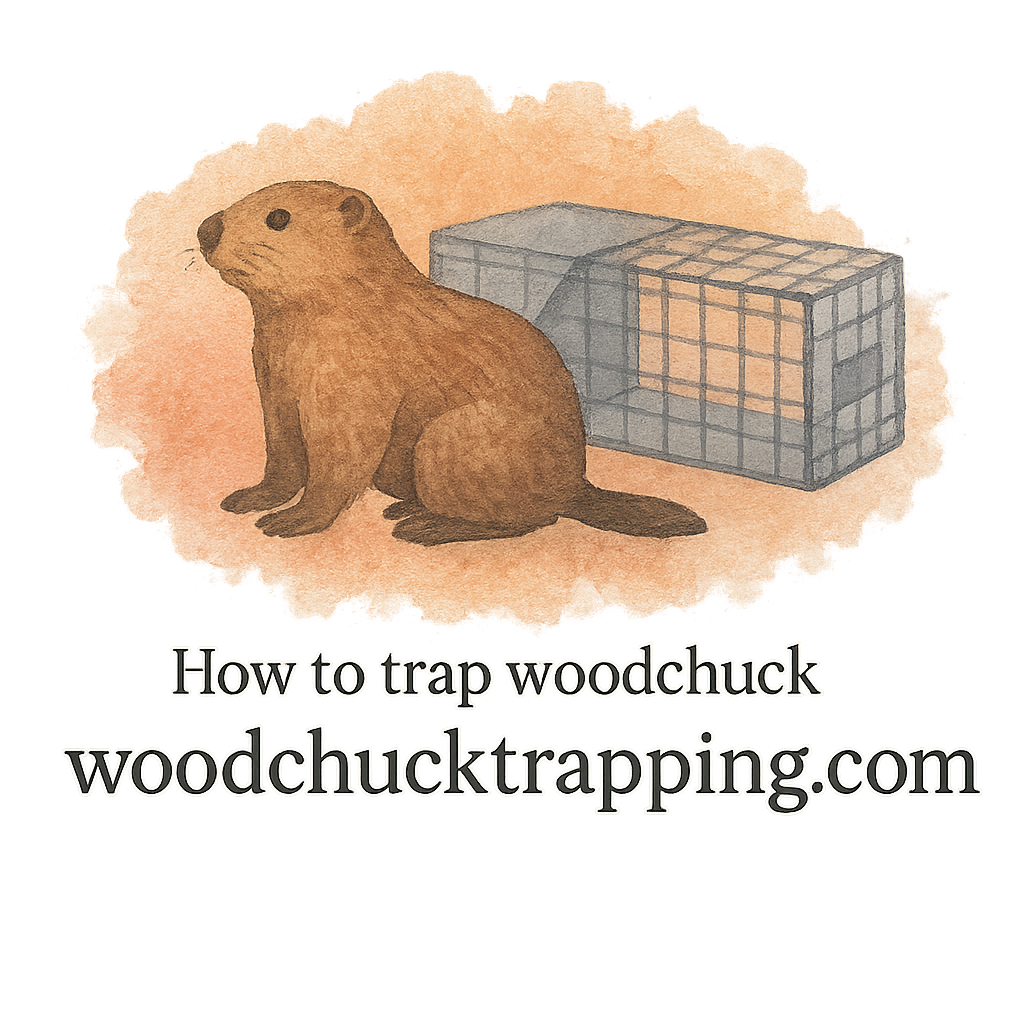Introduction
If you’ve ever had a woodchuck digging holes in your yard, you already know how frustrating it can be. These little tunneling experts, also known as groundhogs, can cause serious lawn and garden damage. But here’s the catch: trapping them isn’t always as easy as setting a trap and waiting. There are plenty of challenges in woodchuck trapping techniques that homeowners face. Luckily, with the right knowledge and a few smart solutions, you can outsmart these furry escape artists.
In this article, we’ll break down the 12 most common challenges in woodchuck trapping—and the solutions that actually work. Whether you’re struggling with baiting, trap placement, or humane handling, this guide has you covered.
Understanding Woodchuck Behavior
Why Woodchucks Are Hard to Trap
Woodchucks are cautious animals. They notice new objects in their environment, and traps stand out like a sore thumb. They’re also great at recognizing danger, which makes them trap-savvy over time.
Common Signs of Infestation
Before setting traps, you need to know if woodchucks are really the culprits. Look for:
- Fresh dirt mounds near burrows
- Large holes around fences or sheds
- Chewed garden vegetables
- Flattened grass trails
Spotting these signs early makes trapping much easier.
Challenge 1: Selecting the Right Trap
Compact Traps vs. Larger Options
Not all traps are created equal. A common mistake is choosing a trap that’s either too small or too bulky. Compact traps are easier to set up in small yards, while larger traps give the woodchuck more room to enter without suspicion.
Choosing Humane and Safe Traps
Whenever possible, aim for humane traps that safely capture the animal without causing injury. These are effective and align with trapping laws and safety in most areas.
Challenge 2: Proper Baiting and Luring
Scent Baits and Lures
The right bait and lure can make or break your success. Woodchucks love fresh vegetables like apples, lettuce, and carrots, but a scent bait can increase attraction dramatically.
Placement Mistakes to Avoid
Placing bait too close to the entrance often scares the animal off. Instead, position it deep inside so the woodchuck has to fully enter the trap.
Challenge 3: Trap Location and Setup
Burrow Entrances vs. Feeding Areas
Where you place the trap matters. Some trappers set it directly outside burrows, while others prefer garden entry points. Both can work, but consistency is key.
Mistakes in Trap Placement
Avoid putting traps in open areas where woodchucks feel exposed. Camouflaging the trap with grass or dirt makes it feel more natural.
Challenge 4: Handling Trap-Savvy Woodchucks
Recognizing Smart Escape Patterns
Woodchucks that have seen traps before can be difficult to catch. They may investigate without entering, or worse, steal bait without setting off the trigger.
Adjusting Techniques for Success
Using fresh trap scents, switching up bait types, or moving the trap slightly can reset the game.

Challenge 5: Safety Concerns During Trapping
Risks to You and Your Pets
Woodchucks may look harmless, but they can bite and scratch if threatened. Always wear gloves when handling traps. Keep pets away from active trapping zones.
Laws and Safety Regulations
Every state has different rules. Review your local laws and safety guidelines before trapping. Violating them could lead to fines.
Challenge 6: Weather Conditions Impact
Rain, Heat, and Seasonal Changes
Bad weather can ruin your efforts. Rain washes away lures, and extreme heat can spoil fresh bait. Adjust trapping schedules depending on the season for the best results.
Challenge 7: Dealing with Small Yards and Minimal Space
Trapping in Confined Areas
If you live in a small yard, space is limited. In this case, minimal space traps and creative setups are essential.
Challenge 8: Identifying Yard Damage Correctly
Distinguishing Woodchuck Damage from Other Pests
Not all holes belong to woodchucks. Skunks, rabbits, and raccoons can cause similar yard damage. Identifying the culprit ensures you use the right strategy.
Challenge 9: Humane Handling of Trapped Animals
Gloves and Safety Tools
Always use tools like gloves and catch poles to prevent injury when handling a trapped animal.
Relocation or Other Humane Methods
Some states allow relocation, while others require alternative humane handling methods. Always check local rules before making a move.
Challenge 10: Equipment Limitations
Common Trap Gear Failures
Old or rusted trap gear can malfunction. Weak springs, faulty triggers, or broken doors lead to missed catches.
Upgrading Tools and Equipment
Investing in better equipment pays off. Browse equipment reviews to compare reliable brands.
Challenge 11: Preventing Future Infestation
Blocking Burrows and Entry Points
Even after removal, woodchucks may return. Seal burrows with rocks or fencing to discourage re-entry.
Yard Maintenance and Prevention
Keep vegetation trimmed and gardens protected with fencing. For more tips, check prevention strategies that stop infestations before they start.
Challenge 12: Lack of Knowledge in Trapping Techniques
Learning Proper Techniques
Many beginners make mistakes due to lack of guidance. Explore proven trapping techniques and how-to-trap guides before starting.
Avoiding Costly Mistakes
Following expert advice helps you avoid wasted time, broken traps, or injured animals. For more tips, explore resources on trapping essentials and woodchuck trapping.
Conclusion
Woodchuck trapping isn’t just about setting a trap and waiting—it’s about understanding their behavior, avoiding common mistakes, and applying the right techniques. By tackling these 12 challenges, you can protect your yard, garden, and peace of mind. Whether you’re dealing with woodchuck infestations, learning to use humane traps, or preventing future damage, knowledge is your best tool.
FAQs
1. What is the best bait for woodchuck trapping?
Fresh vegetables like apples, carrots, and lettuce work best, but scent baits add extra attraction.
2. Are woodchucks dangerous to humans?
They usually avoid people, but trapped woodchucks may bite. Always wear gloves when handling traps.
3. Can I trap woodchucks in the rain?
You can, but rain often washes away lures and reduces effectiveness.
4. How do I know if I have a woodchuck problem?
Look for signs such as burrows, dirt mounds, and garden damage.
5. Is relocation legal in all states?
No, each state has different laws and safety regulations.
6. What’s the safest trap for small yards?
Compact traps designed for minimal space are most effective.
7. How do I stop woodchucks from coming back?
Seal burrows, maintain your yard, and follow prevention strategies to keep them away.


